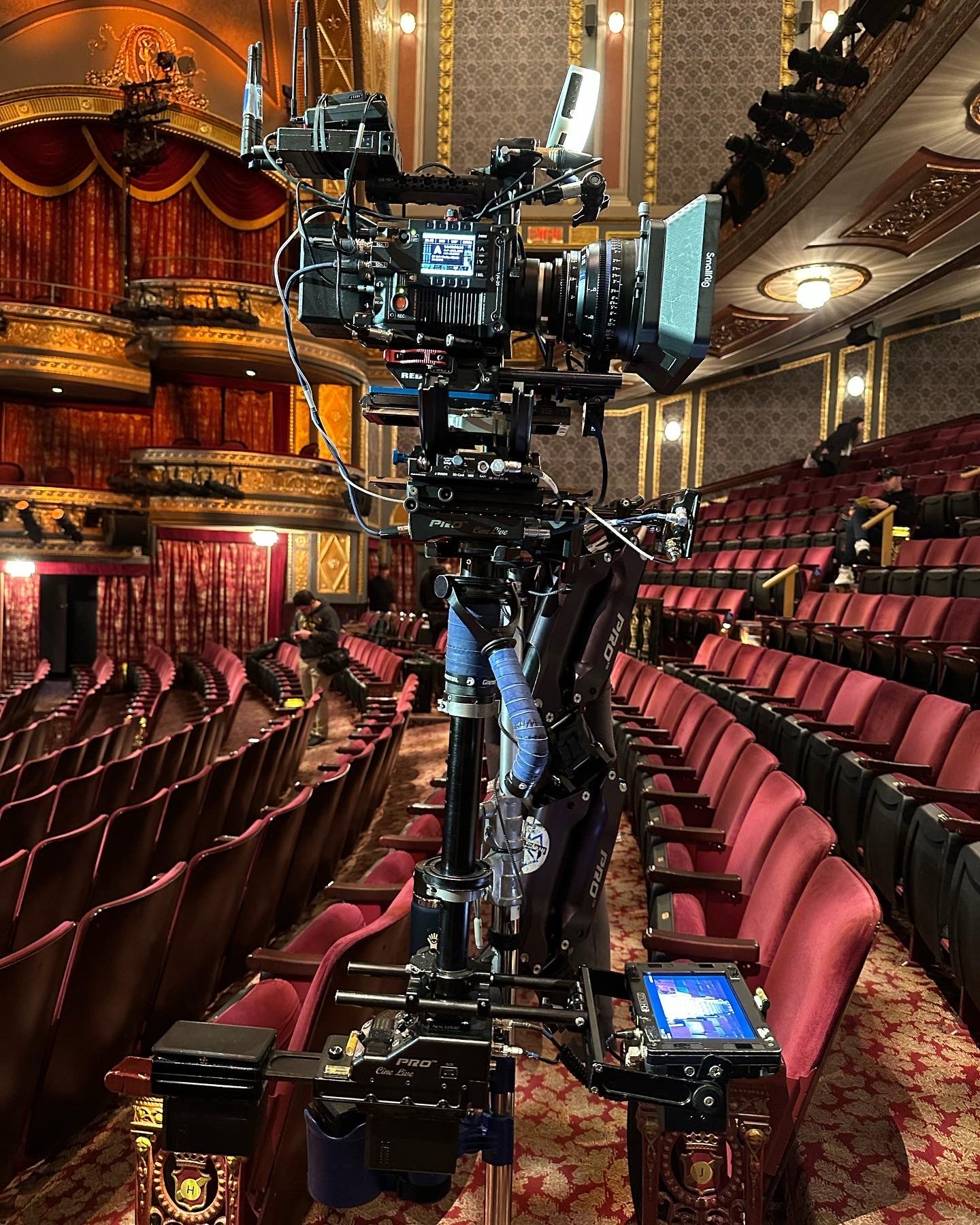All you need to do, is figure out a way to use electro magnetic radiation to slow down particles.
It’s just a small technical challenge.
From these 2 sentences, I have written a 52 pages PowerPoint presentation to get funds from Wall Street.
I expect to find ~$2 bn.
See you in jail!
Hah! My ChatGPT bot did 60 slides in 90 seconds, and submitted it hours before yours. See YOU in court!
Hah! Jokes on both of you, I submitted a super generic patent for “cold microwave” YEARS ago to leech off of anyone who manages to actually invent this technology in my lifetime. See you BOTH in court (and probably also jail)!
Calm down there Elizabeth Holmes
Technically that’s already a thing. It is pretty expensive compared to a normal refrigerator though…
Easy, just invert the polarity of the microwaves
i turn the microwave upside down
And if you manage that, you’ll make Bill Gates and Elon Musk look like paupers.
Then you buy X and rebrand it Twatter.
I prefer Xitter.
deleted by creator
There’s something called blast freezer, which is basically a freezer with fans inside, like what convection ovens have. It cools down food much faster than a standard freezer.
It’s on my list when I have fuck you money. Next to a pacojet
The pacojet is way expensive, also, the pacojet patents runned off and now there exists way cheaper alternatives that work in the same way. Check out the NinjaCream.
I did but I really want the pacojet :)
Why? Not challenging, just wondering what the pacojet does that other machines can’t
Just reading a quick review of the Ninja Creamy, the Pacojet can run without putting chunks of plastic in your ice cream.
“In early 2023, a moderator in the Ninja Creami Community Facebook group introduced a new rule: No more posts about the plastic issue, lest they clog up the group.”
Yeah that seems bad lol. I feel like there has to be an option in between $200(creami) and $7000(pacojet) that can avoid chunks of plastic though
Oh. That’s concerning. 😕
You know, a Pacojet can produce a powderized, uh, snow-like texture.
Weird, I JUST watched that movie.
I just looked at the website for the pacojet since I’d never heard of it: legit the most patronising website I’ve ever seen in my life
I think you mean pacotizing®
Check out the Ninja Creamie for something almost exactly like the Pacojet but much more affordable.
Well, yes, but then I wouldn’t need fuckyou money
Basically like a blast furnace right?
The problem is that cold is merely the absence of heat, you can’t inject cold into something or generate cold, because there is no such thing as cold. It’s kind of like how we can make a light bulb, but we can’t make a dark bulb.
Maybe we could start manufacturing mini black holes to build the dark bulbs!
Nope that’s unfortunately not how black holes work. It would essentially look the same as having the bulb painted black.
Practically speaking I think having a mini black hole in your home would look like being rapidly crushed to death.
I bet if you had a black hole with a wall on one side and a light on the other, it’d cast a really trippy shadow.
Sadly, a mini black hole would suck up everything around it. Much like a tiny Katamari Damacy, it would quite quickly consume everyone and everything around it. Of course after not too long it would become a regular sized black hole.
Some mini black holes do not grow into black holes. They collapse. The issue is that they aren’t stable for any decent length of time. Fractions of a nanosecond.
A capitalist haven, think of how many black holes one could sell!
That’s the best explanation I have seen for heat.
I’ve ran equations for heat so I get it more than most, but always found it difficult to explain.
We have that, it’s called a fridge, and then there’s a freezer for making things frozen.
But a fridge is the opposite of an oven. Some kind of flash freezing would be like the unmicrowave.
The reason we shrink heating devices down but not cooling devices is a combined consequence of economics and the laws of thermodynamics.
First an analogy: Making a boat that moves downstream a river is easy. Take any buoyant material like a log or a branch and drop it in water. Presto, you’ve got a mode of transportation of any size. Want to go upstream? Now you need motors to fight the current. Putting a motor on a large piece of wood, (a boat) is economically viable. Putting one on thousands of sticks? Ain’t nobody got time for that.
As a consequence of the laws of thermodynamics, the the universe naturally converts all potential energy (fuel, electricity) into heat. The universe will do this basically on its own, over time, constantly. This is called entropy.
Doing the reverse, taking heat and putting it back into potential energy, i.e. cooling, is difficult. You basically have to pay a price to the universe in some other way, kind of like how a motorboat has to push more water downstream than the current would have naturally moved on it’s own. This is what heat pumps (AC, fridge) do. Heat pumps put some of that heat back into potential energy, in exchange for also releasing potential energy into heat… The trick here is to do these two things in different places. The fridge’s motor converts some electrical energy into heat in exchange for being able to move some of the heat in the fridge outside of the fridge. The consequence of this is that the room the fridge is in is now hotter. Mostly because you took the heat in the fridge and moved it into the room, but also because the fridge’s motor also added some MORE heat to the room in the process in order to fight entropy. So to actually make this useful, you need to insulate what you are cooling (or it will just get warm again, warmer than it was before, because you added heat to the room), and you also want to dispose of the heat in the room. So you pump that out into the atmosphere…
Anyway, long story short, you need insulation, refrigerant, motors, heat changers, lots of power to fight the universe’s tendency to spread heat everywhere. Technically you could miniaturize these things, but they become less efficient as you shrink them down, to the point where things smaller than a fridge are just not practical to make compared to the benefit you get from having them.
Making small heating devices is easy. You don’t need to fight the universe. You just need an apparatus that will “go with the flow”.
TL;DR
“No, I’m not stopping for freezing. We have freezing at home.”
Wow! Thanks for that.
There are blast chillers that are closer to a microwave
Liquid nitrogen
Air Frozer
unmicrowaveI’m laughing more than I should at this

Go ahead, report the mods, they can’t unmicrowave this post
Depending on where you live and the season, that could be called stepping outside.
Blast freezer is a better analogy
They meant quickly. A fridge nor a freezer can make things cold or frozen in a minute or two.
Flash freezer exists
Those devices are very slow at transferring heat, unlike the microwave.
Yup. It’s called a refrigerator
Get out of here future sifi man.
“sci-fi”
“Syfy”
Cyfi
Temperature is average kinetic energy. It is very easy to put kinetic energy into an object and much harder to take it out. Microwaves do it by shining a “light” tuned to microwave frequencies on objects. So you can imagine the problem is about as hard as shining a lamp on something and having it get colder. Laser-based cooling methods do exist but they’re quite expensive and mostly operate on the atomic scale. For now, the best way we know of to cool large items in bulk is to put them next to something that’s even colder—in short, a refrigerator.
Fridge?
There are devices that will cool a drink (can of soda or a beer) to ‘ice cold’ ( I assume something like 5°) in 60 seconds. I guess this sort of answers your question? The full answer is probably not that it is technically impossible, but that the practical use is largely limited to drinks.
What devices? That sounds dope
I had one of these when I was a kid.
It was annoying, though because you needed to fill it with ice and water. We used it very rarely. And IIRC one time we didn’t dump the water out right away and left it overnight, and it never worked again.
In a few seconds.
Refrigerator
You can dump energy into something by blasting photons at it, because photons carry energy. You can’t do the reverse because you’d need to use particles with negative energy. Either that, or you’d need to suck photons out of the food, but it doesn’t work that way; things radiate photons at a specific frequency and intensity (called blackbody radiation) depending on how hot they are, and you can’t make them emit more energy except by getting them hotter.
Allow me to introduce you to this
Can I get an ELI5 of this principle? I read the Doppler cooling part but I can’t connect the dots.
Heat energy is the amount of particle wiggling. With precisely tuned and oriented lasers you can clamp a particle in space, thus prevent it from wiggling.
No wiggling -> very cold.
It’s like slowing cars by crashing another car into them. But it’s photons instead from the exact opposite direction.
Thanks Mr Freeze!
Funny note- the way we actually get things to near absolute zero, is by shooting it with lasers.
A common misconception. Take the so called “light bulb” for instance. People think they emit light. They do not. They ingest darkness. They are dark suckers. They pull in all the darkness around them, but objects get in the way, and that’s why there are shadows. And when they’re full, they stop working. That’s why they have a brown spot when they stop working, they are full of dark.
Don’t fall for the light emitting conspiracy. LONG LIVE THE DARK SUCKERS!!!
For a second I didn’t think this was a meme, and I was like “I’m pretty sure that’s not how it works.”
It was a risk not adding /s especially since I tried really hard to not be too absurd as to be obvious. I will take your unease as a compliment :)
It’s an old meme sir, but it checks out.
Considering room pressure and temperature, things are not cooling at their fastest possible rate. Blackbody radiation isn’t the only way things cool down. You are forgetting conduction and convection. Liquid nitrogen can cool things down super quickly.
I’m not forgetting them: they’re just but relevant to the way I interpreted the question. I’m assuming OP wants something that works on a similar physical principle to a microwave, not just a fast way to chill things.
Ah sure, yeah, if they want it to actually use radiation, it’s not possible.
Refrigeration Tech here. See: Traulson Blast Chiller. I imagine there’d be a consumer version if enough people wanted them.
But isn’t the cooling method an airflow and steady temperature decrease of the chamber?
Seems more like a reverse convection oven than a microwave.
But thanks otherwise. I never knew these existed. Was an interesting read.
Without breaking the laws of thermodynamics, I’m not sure how you’d accomplish that. Being you can’t “make” something cold. You can only remove the heat…
Blast Chillers can make 160°F Poultry 34°F quite fast. Mind you that’s internal Temps. As far as I know, airflow is the best, maybe only way to carry the heat away…
I got that. It was more about how the Blast Chiller generally functions. It does not use radiation from the electromagnetic spectrum like a microwave, but uses airflow like the afromentioned convection oven. But thanks again for explaining. I appreciate the additional input.
if you see a dark area you can turn on a flashlight to emit light towards the area and make it not-dark.
If you see a lit area and you want it unlit, there is no anti-flashlight you can point towards it to suck the light out.
Similar kind of thing, heat can only be given, not taken. heating stuff up is easy, but for cooling the best you can do in most cases is to make it easier for the thing to give you its heat (ex by the atmosphere colder), but you can’t force it.
This is fundamentally not true.
Light is made of electromagnetic waves. If you can control the timing of those waves precisely enough, you can add another light with the opposite phase (an inverted wave) that will cancel out the other light.
This is what happens in the famous “double slit experiment”. It’s also the same principal as noise cancelling headphones albeit with sound pressure waves instead of EM waves.
Scientists have actually cooled atoms very close to absolute zero by shining a laser at them
I said “in most cases”. I am aware that it is possible. We’re looking at a macroscopic system here though. A microwave, not a couple of atoms in a lab. good luck cooling a couple of atoms in the center of an opaque blob of food with a laser
I completely agree with your third point where you said “in most cases”.
It was your first two points trying to create an analogy with light that I was responding to
I mean like the analogy holds until quantum mechanics - which is pretty good - no need to nitpick
Neither EM wave interference nor noise cancelling headphones are quantum mechanics. It’s not nitpicking.
quantification of light as a particle and the theory of its wave particle duality yes is by definition quantum mechanics, which was proven first by the double slit expierament. Up until then 2 light sources never canceled each other out so it was assumed light is 100% quantifiable and a particle.
(quantify is actually where the word quantum comes from)
noise canceling headphones you’re good for tho, the existence of waves is a different subject
Edit: and IG if we want to talk about fundamentally untrue then, your comments also wrong cause its a pretty big thing in science that light ISNT just a wave… but of course I’m not being nitpicky right?
-
It was theorized that light could be a wave way before the double slit experiment. Like, a century before. So no, it wasn’t “assumed light is 100%” quantized before that experiment.
-
Anything that is a wave can be cancelled, so this idea was baked right into the wave theory of light, they just didn’t have the ability to control light precisely enough to prove it until the double slit experiment. You don’t need quantum mechanics to explain wave theory, it just happened that the double slit experiment, while proving that light behaved like a wave, also showed other characteristics that it was also behaving in a quantized fashion. The fact that light is quantized into photons has nothing to do with the fact that they cancel so you really don’t need quantum mechanics to explain it. The reason light can be cancelled is exactly the same as every other thing in physics that behaves like a wave.
-
The word quantum comes from the word quantization not “quantify”. Those two words mean different things
-
Light is a wave. It also happens to be a particle. So the “existence of waves” is not a different subject. It’s exactly this subject
Edit: Love the snarky edit to a post full of being confidently wrong. I’m going to go engage with others. Good day, sir/ma’am!
Quantify and quantization youre saying have different root words? their similarity in definition and to the Latin word quantus is just coincidence? (whoops nitpicky ahem ahem)
And of course it was hypothesized but never proven, double slit pushed it towards theory/fact
but also I’m not sure if you know where the line of quantum mechanics to newtonian mechanics are, cause newton definitely didn’t theorize too much about the energy of light
-
deleted by creator
deleted by creator
deleted by creator
I expect this post in a couple days: “How do I remove a paper towel that is frozen to my bottle of wine?”
I forgot to mention that the bottle is fractured and the frozen paper towel is the only thing holding it together
barely held together by alcohol and a thin, icy, fragile exterior
I’m in this comment and I’m totally fine so stop asking.
Should work even better with salted wet paper towels
We used to put warm beer, ice, and salt in a cooler to cool the beer down quickly on Friday after work. It worked great for that.
Also it’s not only a higher rate of cooling, but the dryness of the freezer makes some of the water evaporate and carry heat away with it!
If you want to cool something even more quickly, spray it with upside-down compressed air (warning: dangerously cold)
The water has to be cooled too, and there’s still air around it though?
I guess we’re talking about direct contact, not around a container, otherwise the water turned ice may even serve as an insulator?
The water creates a better way to transfer heat from the container to the freezer because it has direct contact with the container and replaces the air around it. Yes the water needs to be cooled too, but still the process is way faster because air really is a good insulator for heat. This is why insulating materials for houses e.g. always try to maximize air content (foam, glass wool, styrofoam)
You also get evaporative cooling, as the freezer is a very low humidity environment. This is accelerating the cooling much more than any thermal conductivity the water adds.
The reverse process is why humid air makes your beverages get warm quickly when the water precipitates on a cold can/glass.
N.B. maximize air content while minimising air movement and therefore convection. Otherwise you could just have cavities in your walls for maximum air.
Correct. Convection would just annihilate your insulating effect
I have no idea why you got downvoted so much
:)
Laser cooling exists, but I don’t suppose you can afford one or want your beer on 2°K
it also helps to be cooling a single atom at a time
My god where does it end with you beer snobs??
A lot of laser coolers were built exactly for cooling single atoms (to do scientific research)
How does that work?? Genuinely curious.
It’s unintuitive, but super cool! There’s a great video by Physics Girl and Veritasium that explain it better than I ever could here.
First, the wavelength of the laser (think of it as the “color” of the laser) is chosen such that the energy of the photons is just under the energy state of the atoms that you are trying to cool.
Now, when the atom is moving toward the source of the laser, this causes the atom to “see” a higher energy. This is called Doppler shift and is a very well-known effect in anything that emits waves and is moving. In fact, you’ve experienced it before when you hear a car horn – as it moves towards you it has a higher pitch and as it moves away from you it has a lower pitch.
So, for atoms moving toward the source the see the energy rise just enough to absorb the photon and move to a higher energy state. Inevitably, the atom will want to move to a lower energy state (as all matter does) and will end up ejecting a new photon in a random direction. In order to maintain the conservation of momentum, this means that the photon will likely be ejected in a way that counteracts the direction it was previously moving, effectively slowing it down. Since heat is a measure of how fast atoms are moving, this means that atom has cooled down.
For atoms moving away from the laser source, they are unable to absorb the photons because the Doppler shift acts in the opposite direction, and they are completely unable to absorb the photons.
So as a result of all this, it is possible to slow down atoms moving in a very specific direction, without affecting the other atoms. This means you can systematically slow atoms down which means you can systematically cool things down.
Edit: Here’s a piped link to the youtube video above in case you’re privacy-conscious, however, Dianna (aka Physics Girl) has been bed-ridden with Long COVID for a while now so it would be great if you could contribute to her Patreon in lieu of the ad revenue
Thank you!! This was a fantastic explanation! Great ELI5 style, I feel I don’t even need to watch that video - even though Veritasium is amazing.
Here is an alternative Piped link(s):
great video by Physics Girl and Veritasium
Piped is a privacy-respecting open-source alternative frontend to YouTube.
I’m open-source, check me out at GitHub.
Great bot! But please see the edit to my post
Basicly photons are shot against an atom to slow it down (the slower the elements move the “colder” something gets)
This is a bit like asking if we could build a flashlight that emits a beam of darkness I think
It’s not. A device that rapidly cools things down placed inside it isn’t implausible. He’s not asking for a beam of absence, he’s asking for an enclosed space that subtracts heat.
Shooting something with “cold energy beams” is an anti-microwave
We aren’t talking about machines to make things cold, I was asked if we could make microwaves that make stuff cold
I do believe that’s a freezer.
Yes or one of those weird ice cream things that has an extremely cold surface, or one of those things where you roll it in ice water or a million machines. “Machine that makes things cold” isn’t sci fi.
heat pump
I have that device
It is my phone
Very much so, and equally possible in theory (interference patterns with light exist, light cancellation could work somewhat like noise cancelling) but also equally impossible to do at anything much above an atomic scale.
That’s a fog machine























